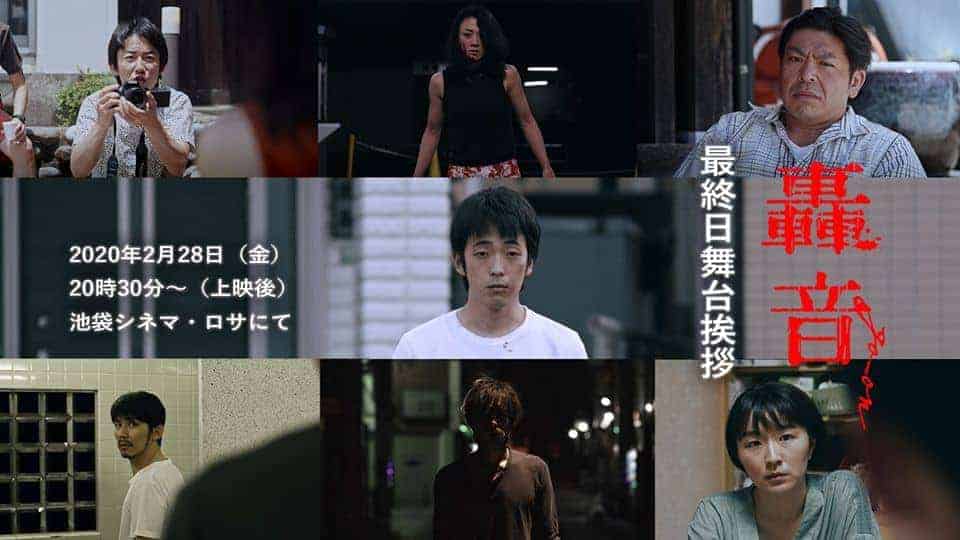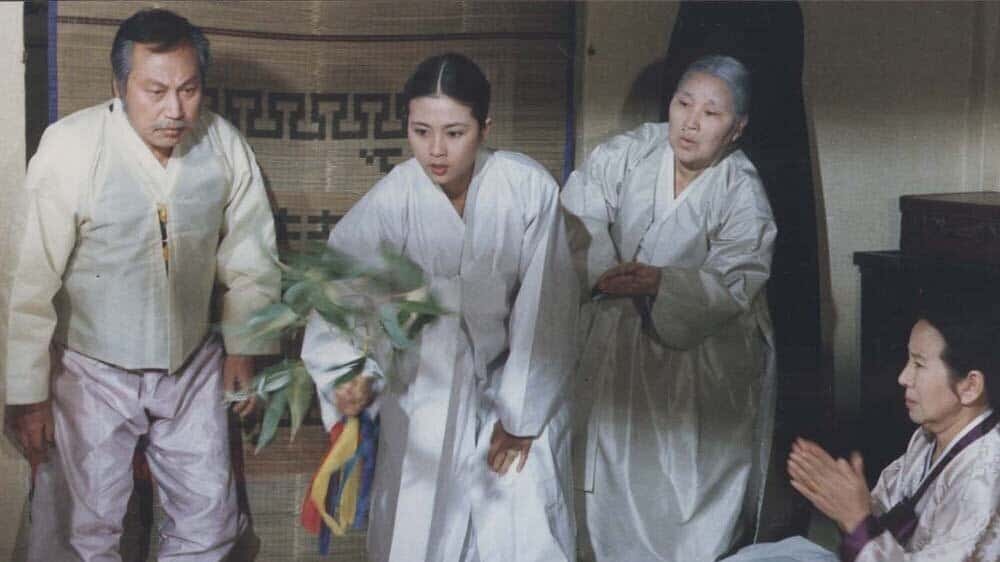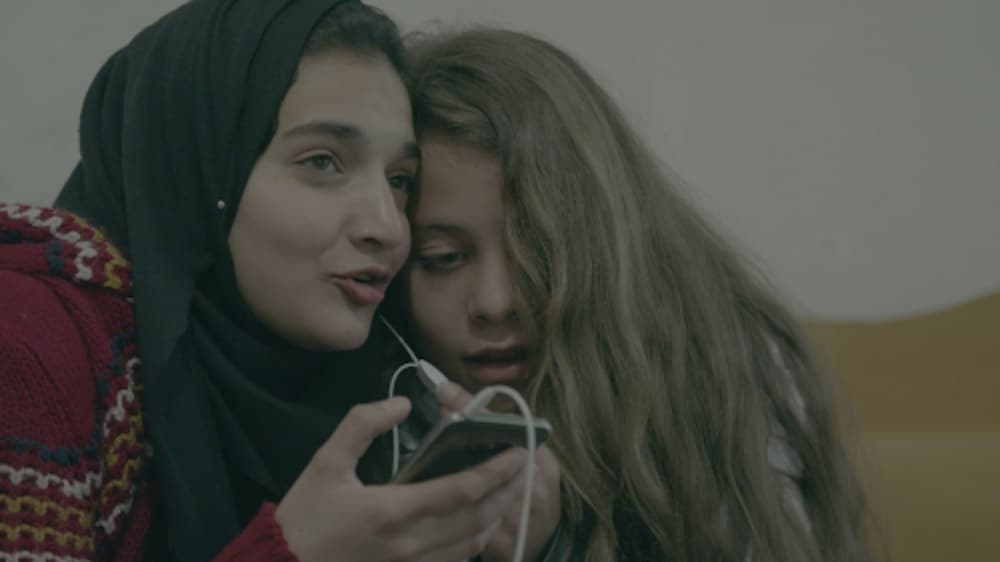As we have witnessed extensively during the last few years in (Asian) festivals around the world, the Japanese indie movie industry is filled with films of quality, despite the lack of significant funding. However, as family dramas have always been one of the main “cells” of the industry and Hirokazu Koreeda has come to be its “most” renowned voice in the rest of the world, his style has dominated the field significantly, to the point that there is an increasingly number of movies that look very much alike, both in terms of story and presentation. Ryo Katayama's debut feature film, despite being also of the category, is a distinct effort to stray away from the aforementioned form, by following a different path that shares some similarities with “Destruction Babies” and a setting much reminiscent of “Ken and Kazu” (or Kim Ki-duk's “Pieta” one could say).
Roar is screening at Japan Cuts

The intro offers an intense and somewhat disorienting home-video like sequence that introduces Makoto's family briefly and particularly how his older brother, Tadashi, ended up committing a heinous crime. The result is that the father cannot handle his son's deeds and commits suicide, and the mother loses her grip with reality. The story then unfolds in two different axes. In the first one, Makoto, not being able to handle any of it, runs away from the house, and soon finds himself in the company of Manabu, a man who makes a living by getting paid for hitting people, through a contractor who mostly services people who want to take revenge. Makoto and Manabu's relationship is rather strange, since the former is just staying in the latter's house, occasionally following him when he goes to “work” and him barely acknowledging his “visitor's” existence.
The second axis revolves around Hiromi, a young woman, who hosts a popular show and retains an extramarital relationship with her boss, despite being quite popular among men. When Mayuko, a friend of hers, returns from Tokyo to Fukui, where the whole story takes place, she introduces Hiromi to a very handsome young man who already admires her from her show. Almost from the get-go, a romantic relationship starts unfolding. Her former boyfriend, however, does not take well to the changes in their relationship.
A third, much briefer axis, revolves around Mayuko, and the fact that her brother, who has been taking care of their elder father, asks her to deal with him from now on. This part, however, is somewhat disconnected from the rest of the movie, and can be only justified due to the director's personal story, as presented in the media pack of the production.
Ryo Katayama uses the rather bleak setting of Fukui to present a story of depression, as exhibited mostly in the Makoto-Manabu arc. The lack of orientation the two men exhibit seem to be a direct result of their connection with their family, as both of them seem to have every reason to leave the city and their former lives, but due to this invisible bond, they cannot bring themselves to do so. The result is that the one has become a hermit and muscle-for-hire despite the toll that his line of work takes on him, and the second, in a desperate search for someone to help him (and a big brother in essence), a “sidekick” to a man who barely acknowledges him. And while their need/cry for help becomes visible from the beginning, as the story unfolds, one can witness also another need, that of helping others and being needed, which eventually becomes an additional driving force for their behavior. Expectedly, in such a setting and through the realistic but also pessimistic approach the story follows, solace and true solutions do not come easy.
Hiromi's arc is much “happier”, a sentiment that is communicated by her cheerful behavior, the fact that a romance begins to bloom, but also technically, since DP Yuji Fukaya's use of light highlights the fact that her world also includes some bright moments, in contrast to that of Makoto and Manabu. As soon as she starts dating the young man, however, the fact that her world is split between a hopeful future and a dead past also comes to the fore. Her relationship with her boss, which also includes some elements of “abnormal” eroticism (an element that winks at “Snake of June”) represents the latter, while her new one represents the former.
In this setting, one of the best traits of the film derives from the new relationship, since Katayama presents two individuals who are not scared to show they like each other from the beginning, in contrast to the norm of most Japanese movies, where unspoken feelings and an almost illogical delay in the progression of romantic relationships take place. Mie Ohta's performance benefits this arc to the most, as she is quite convincing in both the different ways her two relationships progress, and the way she starts to change after Mayuko's intervention, with her relationship with her boss causing her bother instead of pleasure.
Through all the aforementioned comments, Katayama seems to state that the violence that dominates the narrative, particularly on the first arc, emerges as the most obvious solution for a number of people who cannot handle their life otherwise. This sentiment includes Manabu, but also his “clients” and even Makoto, who may not partake in it, but does not seem at all appalled by it, as he repeatedly watches his “roommate” beating people to a pulp. At the same time, this seemingly antithetical chemistry between Manabu and Makoto is benefitted the most by the competent performances of Katayama himself and Ryo Anraku, respectively, whose differences are highlighted not only by their behavior but also from their overall appearance. Particularly the scene with the scissors is quite impressive, due to its meaning but also from the way the two act in it.

Some issues with the narrative and particularly the writing do exist however, since Katayama wanted to include much more comments and elements (occasionally of homage) than the 90 minutes of the film would allow, to the point that some of the characters' behavior seems completely unjustified even in the “pressure-that-erupts-into-violence”-logic that characterizes the film. Furthermore, a number of questions that the viewer is bound to have remain unanswered (regarding Manabu in particular), and some parts are quite vague and difficult to understand (the intro most of all).
On the other hand, the cinematography is excellent both artistically and contextually, with Yuji Fukaya painting Fukui with tones of grey that highlight the depression and the small-town mentality that dominate the setting. The fact that most of the scenes feature just the protagonists and no kind of bystanders also works well for the film, giving the narrative a fittingly dystopian essence. The same applies to the pace, as dictated by Katayama's own editing, who retains a rather fast tempo through frequent cuts, in another element that makes “Roar” stand out from the majority of indie Japanese films.
Ryo Katayama has not yet fully mastered the medium (he couldn't have from his debut), and particularly needs to restrain the amount of ideas and personal experiences he includes in his future works and instead focus on detailing better the ones he can fit in a single narrative. However, “Roar” is intense, full of energy and interesting comments, beautifully shot and well-acted, and overall, a more than hopeful debut. And on a personal note, since we have already started seeing Korean “Koreedas” for some time now, it would be interesting to finally witness a Japanese “Kim Ki-duk”.















